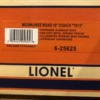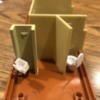Team,
i have the 2011 Lionel 18 inch Milwaukee Road 7 car passenger set from 2011 that I never opened until today. Half of the cars will light up and the other half don’t.
I stored them in my attic which might be the reason they don’t work.
I have the correct replacement bulbs, and replaced them on the one coach and they still don’t light so I am thinking that the board in the roof is not good or the on / off switch on the bottom of the car is bad.
Two question from the smart folks on the forum
1. Would the heat from all these years ruin the board and bulbs? The bulbs are 18V - Lionel doesn’t have them but are looking to get more but I got an alternate from them, inserted and the car still won’t light up.
2. Is there a better alternative, say and LED replacement board that would be plug and play. If so, where would I locate them? The upcoming York Show?
Thanks.

















